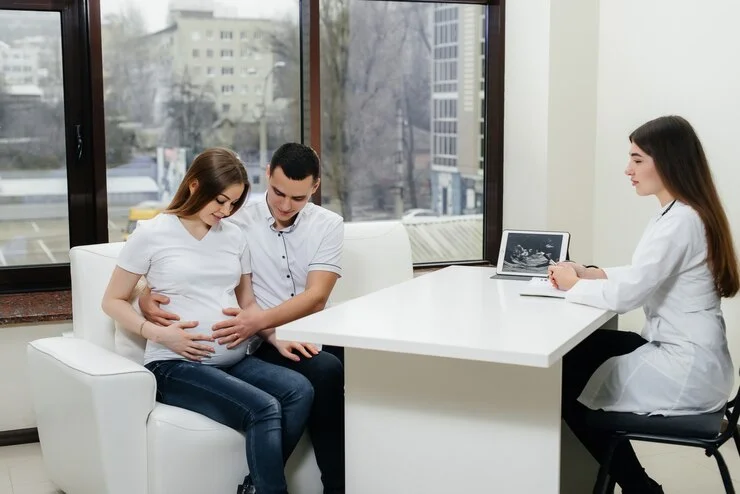HEALTH
A Patient’s Guide for Understanding the Gastroscopy Procedure

A gastroscopy is a test used to check the inside of your throat, food pipe (esophagus), and stomach, recognized as the upper part of your digestive system. It is a common and safe medical procedure that allows doctors to closely examine these areas to look for any problems, such as ulcers, inflammation, or signs of disease.
If you undergo a gastroscopy, knowing what to anticipate can help reduce any anxiety. It is being done with an endoscope or a thin, flexible tube, which has a small camera and light at the tip. The doctor gently guides this tube through your mouth and down your throat to get clear images of the inside of your upper digestive tract, also often called an upper endoscopy.
Why Might You Need a Gastroscopy?
Your doctor might recommend a gastroscopy for several reasons:
- To investigate symptoms like persistent stomach pain, difficulty swallowing, or recurring heartburn
- To diagnose conditions such as stomach ulcers, inflammation, or tumors
- To take tissue samples (biopsies) for further testing
- To treat certain conditions, such as stopping bleeding from an ulcer or removing small growths
Preparing for Your Gastroscopy
Proper preparation is essential for a successful gastroscopy procedure. Singapore hospitals and clinics typically provide detailed instructions, but general preparation includes:
- Fasting for 6-8 hours before the procedure (usually overnight)
- Adjusting or temporarily stopping certain medications, especially blood thinners
- Arranging for someone to accompany you home, as you shouldn’t drive after sedation
- Informing your doctor about any allergies, medical conditions, or medications you take
What Happens During the Procedure?
The gastroscopy procedure typically follows these steps:
- Before the procedure: A healthcare provider will check your vital signs and place an IV line in your arm for sedation.
- Sedation: Most patients receive a mild sedative to help them relax. You’ll feel drowsy but will remain conscious.
- Numbing spray: Your throat will be sprayed with a local anesthetic to reduce discomfort.
- Insertion of the endoscope: The doctor will gently insert the endoscope through your mouth. You might feel some pressure, but you shouldn’t feel pain.
- Examination: The doctor examines your esophagus, stomach, and duodenum, possibly taking photos or biopsies.
- Removal of the endoscope: Once the examination is complete, the endoscope is carefully withdrawn.
The entire procedure usually takes 15-30 minutes, though you’ll need to spend additional time recovering from sedation.
After Your Gastroscopy
After a gastroscopy procedure, Singapore healthcare providers typically monitor patients for about 1-2 hours. You might experience:
- A mildly sore throat for a day or two
- Bloating or gas pains from the air introduced during the procedure
- Drowsiness from the sedation
Most people can return to their normal diet once their gag reflex returns, usually within a few hours. You should avoid alcohol for 24 hours and exhausting activities until the next day.
Gastroscopy Procedure in Singapore: What to Expect
Singapore’s healthcare system is well-known for its excellence, offering state-of-the-art equipment and highly trained medical specialists. The gastroscopy procedure Singapore is carried out to high standards in both public and private healthcare facilities. Patients can look forward to safe, dependable care and precise diagnoses in a professional environment
Most hospitals and specialized digestive centers offer this procedure as both an outpatient service and as part of inpatient care. The cost varies depending on whether you choose a public or private hospital, your subsidy status, and your insurance coverage.
Potential Risks and Complications
While a gastroscopy is generally safe, like any medical procedure, it carries some risks:
- Mild discomfort or sore throat
- Adverse reaction to sedation
- Very rarely, perforation (a tear in the digestive tract) or bleeding
These serious complications are extremely uncommon, occurring in less than 1 in 1,000 procedures.
When to Seek Medical Attention
After your gastroscopy procedure, it is necessary to contact your healthcare provider if you experience symptoms of severe abdominal pain, difficulty swallowing or breathing, vomiting with blood, fever, and chest pain.
Conclusion
With the advanced technology nowadays, it allows doctors to identify and manage various digestive conditions, such as gastroscopy. Discuss with your trusted doctor to get the right information and the preparation you need to make yourself ready for the procedure.
HEALTH
Serumcu Explained: Beauty Serum vs Cleaning Power

Are you ready to discover a product that can revolutionize your beauty routine and tackle household cleaning tasks? Enter Serumcu, the multitasking marvel that has taken the beauty world by storm. This innovative serum isn’t just about enhancing your skin; it also packs a powerful punch when it comes to cleaning. In this blog post, we’ll delve into what Serumcu is all about and explore its dual capabilities. Whether you’re looking for radiant skin or a sparkling clean home, Serumcu might just be the answer you’ve been searching for. Let’s dive in!
What is Serumcu?
Serumcu is an innovative serum designed to cater to both beauty and cleaning needs. This versatile product combines high-quality ingredients that nourish your skin while offering powerful cleaning properties.
In the realm of skincare, Serumcu delivers hydration, rejuvenation, and a radiant glow. It’s formulated with potent antioxidants and vitamins that target various skin concerns such as dryness, fine lines, and uneven tone.
On the other hand, its cleaning capabilities are equally impressive. The same formula helps break down dirt and grime on surfaces without harsh chemicals or toxic residues.
With this dual-functionality, Serumcu stands out in a crowded market of beauty products. It allows users to streamline their routines saving time and providing comprehensive solutions for both personal care and household maintenance.
The Benefits of Using Serumcu
Serumcu offers a range of benefits that cater to both beauty enthusiasts and cleaning aficionados. Its lightweight formula penetrates the skin deeply, providing hydration without leaving a greasy residue.
For skincare, Serumcu helps improve texture and tone. Regular use can lead to visibly plumper skin, reducing the appearance of fine lines and wrinkles. It’s packed with antioxidants that fight free radicals, promoting a youthful glow.
When it comes to cleaning, Serumcu shines as an effective agent for various surfaces. Its powerful ingredients break down grime effortlessly while being gentle enough not to damage delicate materials.
Additionally, users appreciate its versatility; from skincare routines to household chores, Serumcu adapts seamlessly into daily life. This dual-purpose product proves that you don’t need separate solutions for beauty and cleaning needs. With Serumcu at your disposal, simplicity meets efficacy in one bottle.
Beauty Serums vs Cleaning Power: Understanding the Difference
Beauty serums and cleaning products serve distinct purposes, despite both being solutions in their own right. Beauty serums target skin concerns such as hydration, anti-aging, and brightening. They are formulated with ingredients that penetrate deeply into the skin for maximum effectiveness.
On the other hand, cleaning agents focus on removing dirt and bacteria from surfaces. Their formulations often include strong detergents or solvents designed to break down grime effectively.
While beauty serums enhance your complexion, cleaning products ensure a hygienic environment. It’s essential to remember that using one for the other’s purpose can lead to disappointing results.
Understanding these differences helps you choose the right product for your specific needs—whether you’re aiming for glowing skin or a spotless home. Each has its place in daily routines; knowing which is appropriate can elevate both your skincare regimen and household cleanliness efforts significantly.
How to Use Serumcu for Beauty Purposes
To use Serumcu for beauty purposes, start with a clean face. Carefully wash your skin to eliminate dirt and impurities, allowing the serum to absorb deeply and work efficiently.
Next, apply a few drops of Serumcu onto your fingertips. Warm it slightly by rubbing your hands together before applying. This helps activate its beneficial properties.
Focus on areas that need attention—like fine lines or dryness. Use gentle tapping motions to encourage absorption. Avoid tugging at the skin; instead, be kind and delicate.
For optimal results, follow up with a moisturizer to lock in hydration. You can incorporate this into your morning routine or as part of your evening ritual for rejuvenation overnight.
Consistency is key; regular application enhances its effects over time. Experiment and see how it complements other products you love!
Unconventional Uses for Serumcu as a Cleaning Agent
Serumcu isn’t just for beauty routines; it has some surprising cleaning capabilities too. Its formula makes it effective in tackling tough stains and grime around the house.
Try using Serumcu on kitchen surfaces. It can cut through grease, leaving your countertops sparkling clean without harsh chemicals. Simply apply a small amount, wipe with a cloth, and watch the magic happen.
Bathrooms can also benefit from Serumcu’s powerful properties. It works wonders on soap scum and hard water stains in sinks and tubs. A few drops go a long way in restoring shine.
For those stubborn spots on fabric upholstery or carpets, dab some Serumcu directly on the stain before blotting with a damp cloth.
Remember to test any surface first! This ensures you avoid unwanted damage while maximizing its versatility as an unconventional cleaning agent.
Potential Drawbacks and Precautions When Using Serumcu
While Serumcu offers impressive benefits, it’s important to be aware of potential drawbacks. Some users may experience skin irritation or allergic reactions due to specific ingredients in the formulation. Conducting a patch test before full application is advisable.
Additionally, not all beauty serums are created equal. It’s crucial to choose a product that aligns with your skin type and concerns. Using the wrong serum might lead to breakouts or exacerbate existing issues.
When it comes to its cleaning properties, caution is necessary. Although effective as a cleaner, Serumcu can damage certain surfaces if used improperly. Always read labels and follow manufacturer instructions for safe use.
Over-reliance on any single product can limit your skincare routine’s effectiveness. Balance is key; diversify your regimen for optimal results without overwhelming your skin’s natural barrier.
Conclusion
Serumcu has emerged as a versatile product, blurring the lines between beauty serums and cleaning agents. Its unique formulation offers an array of benefits that cater to both skin health and household cleanliness. By understanding the distinct roles Serumcu can play, you can maximize its potential in your daily routine.
For beauty enthusiasts, incorporating Serumcu into skincare regimens brings hydration and rejuvenation. When used correctly, it enhances the complexion while addressing specific concerns like aging or dryness. On the flip side, its cleansing properties reveal a surprising utility for maintaining various surfaces in your home.
However, it’s essential to approach this multifunctional product with care. While many appreciate its multiple uses, some may experience sensitivities or adverse reactions depending on individual skin types or material compatibility during cleaning tasks.
In exploring both realms beauty and cleaning you unlock new possibilities with Serumcu. Whether you’re looking to elevate your skincare game or tackle stubborn dirt around the house, this innovative serum stands out as a must-have item for those seeking efficiency without compromising quality. Embrace the versatility of Serumcu and see how it transforms both your beauty routine and cleaning practices.
HEALTH
Healthy Aging 101: Key Tips for Women in Their 40s and 50s

Aging is a natural part of life, and it brings many changes to the body and mind, especially for women in their 40s and 50s. These decades mark a period of transition, both physically and emotionally Healthy Aging 101. From hormonal shifts to lifestyle adjustments, it’s important to take proactive steps to support overall well-being during this time. Women can thrive in these years by focusing on health, wellness, and the adjustments necessary to maintain a strong foundation for the future. In this blog, we will share practical tips for dealing with these changes and maintaining a healthy balance in life.
Staying Physically Active
Regular exercise is one of the most effective ways to maintain physical and mental health in midlife. Staying active helps reduce the risk of chronic conditions such as heart disease and diabetes, while also supporting mental well-being. Activities like walking, swimming, yoga, or strength training can be tailored to individual preferences and fitness levels.
Incorporating both cardiovascular exercises and strength training into a routine can boost metabolism, maintain muscle mass, and improve flexibility. The key is finding activities that are enjoyable and sustainable, making it easier to stay consistent with a fitness routine.
Managing Hormonal Changes
During this phase of life, many women experience fluctuations in hormone levels due to perimenopause and menopause. These shifts can influence mood, energy, and overall health. Keeping track of these changes is essential for maintaining both physical and emotional balance. In addition, signs of high cortisol in women, such as ongoing fatigue, weight gain, and mood swings, should not be overlooked. Elevated cortisol, often triggered by chronic stress, can significantly affect well-being. If these symptoms become noticeable, addressing stress and exploring lifestyle changes that naturally lower cortisol may be beneficial.
While hormonal changes are a natural part of aging, stress management, a healthy diet, and regular physical activity can help alleviate some symptoms. For those dealing with more intense fluctuations, speaking with a healthcare provider about hormone therapy or natural supplements could offer additional support.
Prioritizing Bone Health
As women enter their 40s and 50s, bone density tends to decrease, increasing the risk of conditions like osteoporosis. Focusing on bone health becomes crucial during this period. Consuming enough calcium and vitamin D through diet or supplements is essential for maintaining strong bones. Regular weight-bearing exercises, such as walking, jogging, or lifting weights, also help strengthen bones and prevent bone loss.
Bone health doesn’t just depend on diet and exercise. Getting regular checkups that include bone density tests can help track changes early on, allowing women to take preventive action if necessary. This proactive approach is key to maintaining mobility and strength in the years to come.
Maintaining a Healthy Diet
A well-balanced diet is vital for overall wellness, especially as the body’s metabolism naturally slows down. Eating nutrient-dense foods helps support energy levels, maintains muscle mass, and supports hormonal balance. Incorporating plenty of fruits, vegetables, lean proteins, and whole grains into daily meals is important for maintaining proper nutrition.
Women in their 40s and 50s should also focus on staying hydrated and reducing their intake of processed foods, which can lead to inflammation and other health issues. Paying attention to portion sizes and eating mindfully can help prevent unnecessary weight gain while still providing the body with the essential nutrients it needs.
Focusing on Mental Health
Mental health is just as important as physical health, particularly during periods of change. Women in their 40s and 50s may experience increased stress, anxiety, or mood changes due to hormonal fluctuations and life transitions. Prioritizing mental well-being by practicing mindfulness, meditation, or simply taking time for self-care can significantly improve emotional balance.
Social connections are also important for mental health. Staying engaged with friends, family, and social activities provides emotional support and a sense of belonging. Regularly setting aside time to connect with loved ones or engage in hobbies can help maintain a positive outlook.
Getting Enough Sleep
Quality sleep is essential for both physical and emotional health, yet many women in midlife experience sleep disturbances due to hormonal changes or increased stress. Creating a consistent bedtime routine and maintaining a sleep-friendly environment can improve the chances of getting a restful night’s sleep.
Limiting caffeine intake, reducing screen time before bed, and practicing relaxation techniques, such as deep breathing or meditation, can help with falling and staying asleep. If sleep problems persist, speaking with a healthcare provider to explore potential solutions can make a big difference.
Managing Stress Levels
Managing stress is crucial for maintaining overall well-being during these years. Chronic stress can affect the body in many ways, including contributing to issues such as high blood pressure and hormonal imbalances. Engaging in regular relaxation techniques such as yoga, meditation, or even spending time outdoors can significantly reduce stress levels.
Women should also make time for themselves, balancing work, family, and personal life in a way that doesn’t lead to burnout. Prioritizing mental and emotional health through stress management can greatly impact how women navigate this period of life.
Protecting Heart Health
Heart health is an important focus during midlife, as cardiovascular risks increase with age. Maintaining a heart-healthy lifestyle through regular exercise, a balanced diet, and managing cholesterol levels can help reduce the risk of heart disease. Regular checkups with a healthcare provider are crucial for monitoring blood pressure and cholesterol levels.
Eating foods rich in omega-3 fatty acids, such as fish, flaxseed, and walnuts, can support heart health. Reducing sodium intake and avoiding trans fats are also essential strategies for maintaining a healthy heart as the body ages.
Regular Health Screenings
Staying on top of regular health screenings is vital for preventing potential issues and addressing concerns early. Mammograms, pap smears, and colonoscopies are just a few of the routine tests women should be mindful of as they age. These screenings help detect any issues before they become more serious.
Staying informed about personal health and discussing any concerns with a healthcare provider is an important part of maintaining health in midlife. Proactive care leads to better outcomes and provides peace of mind.
Maintaining Social Connections
Social engagement is an important aspect of aging well. Maintaining strong relationships with friends, family, and social groups can improve emotional well-being and provide much-needed support during life’s transitions. Loneliness can have negative effects on both mental and physical health, so it’s important to stay connected with others Healthy Aging 101.
Participating in community activities, volunteering, or simply making time for coffee with friends can strengthen social bonds. Building and maintaining these connections can greatly impact the overall quality of life during this stage.
All in all, in midlife, women experience many changes that affect both body and mind. By focusing on nutrition, exercise, mental health, and regular screenings, it’s possible to thrive through these years and lay the foundation for a healthy future. Prioritizing self-care and staying proactive about personal well-being leads to a more balanced and fulfilling life. Embracing this time of change with the right strategies allows women to continue enjoying life to its fullest.
Step into more articles that challenge perspectives and boost your learning journey.
HEALTH
Why Staying Active Is Good for Your Health

Are you struggling to start an exercise routine? You’re not alone. Figuring out how to get started with physical activity is a common challenge for many people. But staying active is more than just a fitness goal—it’s a key to improving your overall health. In fact, the World Health Organization reports that over 31% of adults worldwide are not physically active enough, contributing to increased risks of chronic diseases, mental health issues, and even premature death. If you’ve been putting off exercise, now is the time to make it a priority. From boosting your heart health to enhancing your mental well-being, staying active is one of the best things you can do for your body and mind.
Whether you’re new to exercise or looking to reignite your fitness journey, understanding these benefits will help motivate you to stay active.
A related post crafted to enrich your reading and provide valuable context today.
1. Strengthens Your Heart and Lowers Blood Pressure
One of the most immediate and impactful benefits of staying active is the positive effect it has on your heart. Engaging in regular physical activity strengthens your heart, making it more efficient at pumping blood throughout your body. This, in turn, helps lower blood pressure and reduces the strain on your cardiovascular system. Over time, a stronger heart leads to a reduced risk of heart disease, which is one of the leading causes of death worldwide.
You don’t need to run marathons to experience these benefits. Even moderate activities like brisk walking, swimming, or cycling can significantly improve your heart health. Just 30 minutes of physical activity a day can make a big difference. Regular exercise helps keep your arteries flexible and clears out harmful cholesterol, reducing the likelihood of plaque buildup that can lead to heart attacks or strokes.
2. Helps You Manage Your Weight More Effectively
Maintaining a healthy weight is another critical reason to stay active. Physical activity burns calories, helping to regulate your body weight over time. Combined with a balanced diet, regular exercise is essential for weight management and preventing obesity, which can lead to a range of health issues like diabetes, heart disease, and joint problems.
If you’re unsure where to start, you might want to learn how to create an exercise plan that works for your specific goals. Whether you’re aiming for weight loss or simply to maintain your current weight, your exercise plan should include a mix of aerobic activities like walking or jogging and strength training exercises. The key is consistency. Incorporating even moderate exercises into your routine can help you burn calories, boost your metabolism, and achieve long-term weight management success.
3. Boosts Your Mood and Reduces Anxiety
Beyond the physical benefits, staying active can have a profound impact on your mental health. Exercise triggers the release of endorphins, often referred to as the “feel-good” hormones, which naturally improve your mood. People who engage in regular physical activity often report feeling happier, less stressed, and more relaxed.
Exercise is also a proven way to reduce symptoms of anxiety and depression. Physical activity helps your body regulate stress hormones like cortisol, while increasing levels of serotonin and dopamine, which are key to maintaining a positive outlook. Whether you go for a jog, hit the gym, or simply take a long walk in nature, movement can serve as an effective tool to combat negative emotions and improve your overall mental well-being.
4. Improves Muscle Strength and Bone Density
Staying active is not just about cardiovascular fitness—it’s also crucial for keeping your muscles and bones strong. Weight-bearing exercises, such as walking, resistance training, or bodyweight exercises like squats and lunges, play a vital role in maintaining muscle strength and bone density. This is particularly important as you age, as muscle and bone loss increase with time, leading to a higher risk of fractures, osteoporosis, and general weakness.
Strengthening your muscles not only improves your balance and mobility, but it also enhances your ability to perform daily tasks with ease. Building bone density through activities like weight lifting and resistance training can protect against conditions like osteoporosis, helping you stay active and independent as you grow older.
5. Boosts Your Energy Levels Throughout the Day
It may seem counterintuitive, but staying active actually boosts your energy levels. Regular physical activity improves your body’s efficiency in transporting oxygen and nutrients to your tissues, making everyday activities feel easier and less tiring. When you move more, your muscles become stronger and your heart more efficient, leading to improved overall endurance.
As you maintain a regular exercise routine, you’ll notice a decrease in feelings of fatigue and an increase in your energy throughout the day. Whether you’re at work, running errands, or spending time with family, being active will give you the stamina to get through your day without feeling exhausted.
6. Helps Maintain Cognitive Function and Memory
Physical activity isn’t just good for your body—it’s also essential for your brain. Research has shown that regular exercise helps boost cognitive function, improve memory, and reduce the risk of cognitive decline as you age. Exercise promotes better blood flow to the brain, which in turn helps with the growth of new brain cells and improves overall brain health.
Staying active has also been linked to a reduced risk of developing conditions like dementia and Alzheimer’s disease. Whether it’s aerobic exercise like jogging or resistance training, incorporating physical activity into your routine can help keep your mind sharp and your memory strong as you get older.
7. Encourages Better Sleep Quality
If you’re having trouble sleeping, regular exercise might be the solution. Physical activity has been shown to help people fall asleep faster and enjoy deeper, more restful sleep. Staying active helps regulate your body’s internal clock and promotes a natural sleep-wake cycle, making it easier to wind down at the end of the day and wake up feeling refreshed.
Exercise, especially when done in the morning or early afternoon, raises your body temperature. As your body cools down post-exercise, this drop in temperature can help signal to your brain that it’s time to rest.
The benefits of staying active extend far beyond just physical fitness. From boosting your heart health and mental well-being to improving your flexibility, sleep, and immune function, regular exercise is key to living a longer, healthier, and more fulfilled life. Whether you’re just getting started or looking to refine your routine, the important thing is to stay consistent and make physical activity a regular part of your lifestyle. By making movement a priority, you’ll not only feel better today but also lay the foundation for a healthier tomorrow. So, what are you waiting for? Start moving and reap the rewards of an active life!
Explore more knowledge crafted to guide smarter choices and meaningful results.

 BUSINESS10 months ago
BUSINESS10 months agoBrand Visibility with Imprint Now and Custom Poly Mailers

 TECHNOLOGY8 months ago
TECHNOLOGY8 months agoDizipal 608: The Tech Revolution Redefined

 BUSINESS10 months ago
BUSINESS10 months agoExploring the Benefits of Commercial Printing

 HEALTH9 months ago
HEALTH9 months agoHappy Hippo Kratom Reviews: Read Before You Buy!

 HOME IMPROVEMENT10 months ago
HOME IMPROVEMENT10 months agoThe Do’s and Don’ts of Renting Rubbish Bins for Your Next Renovation

 HEALTH6 months ago
HEALTH6 months agoYour Guide to Shedding Pounds in the Digital Age

 LIFESTYLE10 months ago
LIFESTYLE10 months agoThe Disciplinary Wives Club: Spanking for Love, Not Punishment

 HEALTH6 months ago
HEALTH6 months agoThe Surprising Benefits of Weight Loss Peptides You Need to Know












